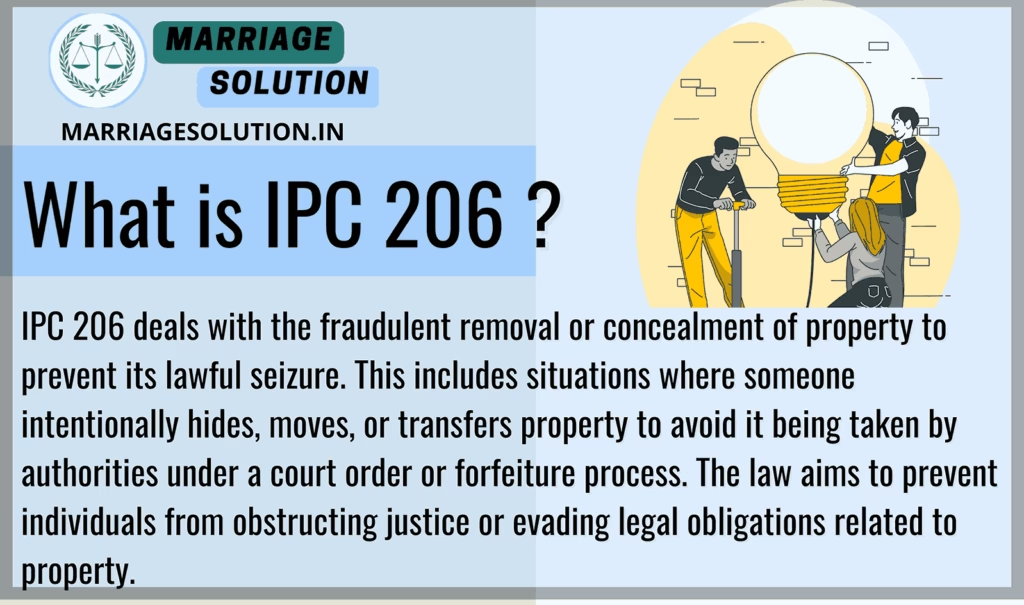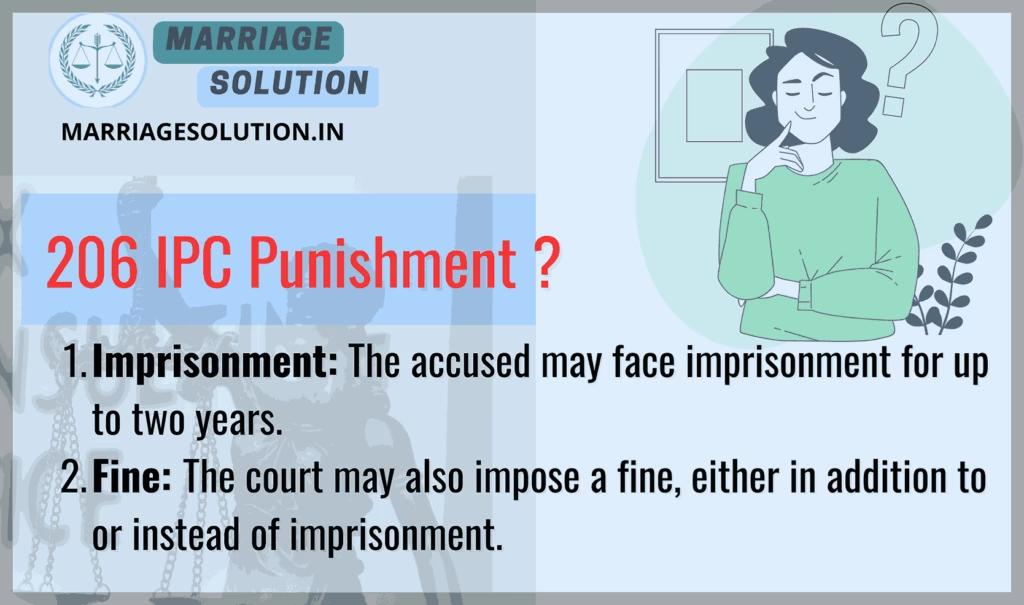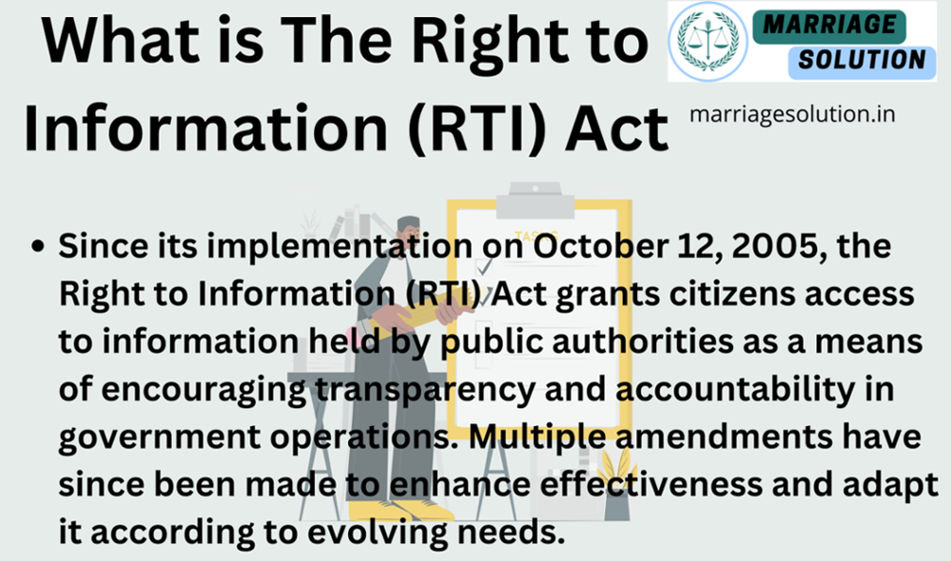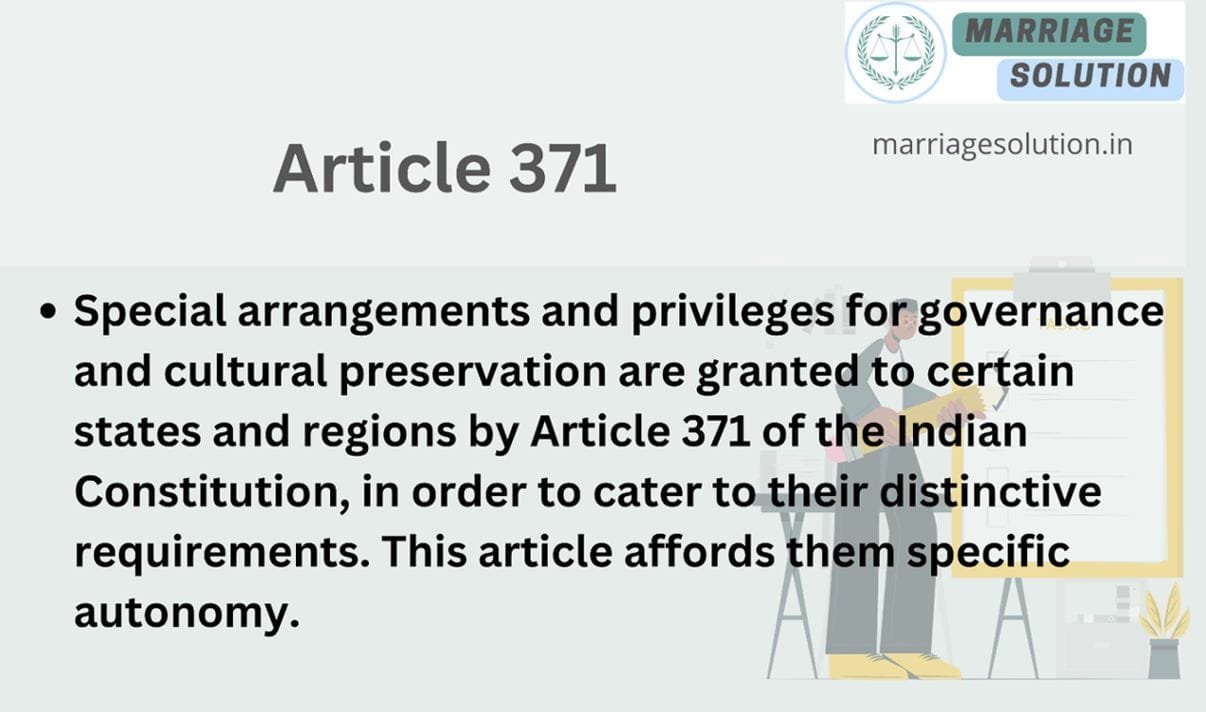Introduction of 206 IPC
Section 206 of the Indian Penal Code (IPC) is designed to protect the integrity of legal proceedings. It ensures that property liable for seizure under a court order or forfeiture is not fraudulently concealed or removed. This provision applies to both movable (e.g., cash, vehicles) and immovable property (e.g., land, buildings). It targets individuals who act with dishonest intent to deceive authorities or obstruct justice.
- Introduction of 206 IPC
- What is IPC Section 206 ?
- IPC 206 in Simple Points
- Section 206 IPC Overview
- 1. What is Section 206 IPC?
- 2. Fraudulent Intent is Essential
- 3. Property Must Be Liable for Seizure
- 4. Punishment for Violating Section 206 IPC
- 5. It is a Bailable Offense
- 6. It is a Non-Cognizable Offense
- 7. Trial Conducted by a Magistrate
- 8. Purpose of the Law
- 9. Examples of Offenses
- 10. Burden of Proof Lies on Prosecution
- Section 206 IPC case laws
- 206 IPC Punishment
- 206 IPC Bailable or non bailable
- Section 206 IPC in short information
- IPC Section 206 FAQs
- If you need support with court proceedings or any other legal matters, don’t hesitate to reach out for assistance.
What is IPC Section 206 ?
IPC Section 206 deals with the fraudulent removal or concealment of property to prevent its lawful seizure. This includes situations where someone intentionally hides, moves, or transfers property to avoid it being taken by authorities under a court order or forfeiture process. The law aims to prevent individuals from obstructing justice or evading legal obligations related to property.

IPC 206 in Simple Points
- What is IPC Section 206?
IPC Section 206 deals with the fraudulent removal or concealment of property to prevent its lawful seizure. This includes situations where someone hides, moves, or transfers property to avoid it being taken by authorities under a court order or forfeiture process. The law applies to both movable (e.g., cash, vehicles) and immovable property (e.g., land, buildings). The key element is the fraudulent or dishonest intent of the accused. - Fraudulent Intent is Essential
For an act to fall under Section 206 IPC, the accused must have acted with fraudulent or dishonest intent. This means they knowingly and deliberately tried to deceive authorities or obstruct justice. For example, hiding assets to avoid paying a debt or concealing property to prevent its forfeiture in a criminal case. Without this intent, the act may not be punishable under this section. - Punishment Under IPC Section 206
The punishment for violating Section 206 IPC includes imprisonment for up to two years, a fine, or both. The court decides the severity of the punishment based on the circumstances of the case. For example, if the value of the concealed property is high, the punishment may be more severe. This provision acts as a deterrent against fraudulent activities. - Bailable and Non-Cognizable Offense
Offenses under Section 206 IPC are bailable, meaning the accused has the right to seek bail and can be released from custody while awaiting trial. It is also a non-cognizable offense, meaning the police cannot arrest the accused without a warrant and require prior permission from a magistrate to investigate. - Objective of the Law
The primary objective of Section 206 IPC is to prevent the obstruction of justice. It ensures that court orders related to property seizure are respected. The law aims to maintain the integrity of legal proceedings and discourage individuals from fraudulently hiding or removing property.
Section 206 IPC Overview
IPC Section 206 defines the offense as the fraudulent removal, concealment, or transfer of property to prevent its lawful seizure. This includes actions taken to evade forfeiture or execution of a court order. The key element is the fraudulent or dishonest intent of the accused. Without such intent, the act does not fall under this section.
1. What is Section 206 IPC?
Section 206 of the Indian Penal Code (IPC) deals with the fraudulent removal or concealment of property to prevent its lawful seizure. This could happen when someone hides or moves property to avoid it being taken by authorities under a court order or forfeiture process. The law applies to both movable (like cash or vehicles) and immovable property (like land or buildings). The key focus is on preventing individuals from evading legal obligations. It ensures that court orders are respected and enforced. This provision is crucial for maintaining the integrity of legal proceedings.
2. Fraudulent Intent is Essential
For an act to fall under Section 206 IPC, the accused must have acted with fraudulent or dishonest intent. This means they knowingly and deliberately tried to deceive authorities or obstruct justice. For example, hiding assets to avoid paying a debt or concealing property to prevent its forfeiture in a criminal case. Without this intent, the act may not be punishable under this section. The law targets deliberate attempts to mislead or defraud. It does not apply to accidental or unintentional actions.
3. Property Must Be Liable for Seizure
The property in question must be legally liable for seizure under a court order or forfeiture. This includes property involved in legal disputes, debts, or criminal activities. For example, if a court orders the seizure of a car to repay a loan, hiding that car would violate Section 206 IPC. The law does not apply to personal property unrelated to legal proceedings. It ensures that property subject to legal action is not unlawfully concealed or removed.
4. Punishment for Violating Section 206 IPC
The punishment for violating Section 206 IPC includes imprisonment for up to two years, a fine, or both. The court decides the severity of the punishment based on the circumstances of the case. For example, if the value of the concealed property is high, the punishment may be more severe. This provision acts as a deterrent against fraudulent activities. It ensures that individuals face consequences for obstructing legal processes.
5. It is a Bailable Offense
Offenses under Section 206 IPC are classified as bailable. This means the accused has the right to seek bail and can be released from custody while awaiting trial. Bail is typically granted as a matter of right, ensuring that the accused is not unduly detained. However, the court may impose conditions to ensure the accused’s cooperation. This provision balances the rights of the accused with the need for justice.
6. It is a Non-Cognizable Offense
Section 206 IPC is a non-cognizable offense, meaning the police cannot arrest the accused without a warrant. Prior permission from a magistrate is required to initiate an investigation. This protects individuals from arbitrary arrests. It ensures that cases are investigated only after proper judicial scrutiny. The provision reflects the need for careful handling of property-related offenses.
7. Trial Conducted by a Magistrate
Cases under Section 206 IPC are tried by a Magistrate of the First Class. The magistrate oversees the proceedings and ensures that the case is handled fairly. The trial process involves examining evidence, hearing witnesses, and determining guilt or innocence. The magistrate has the authority to impose the prescribed punishment. This ensures that justice is delivered efficiently.
8. Purpose of the Law
The primary purpose of Section 206 IPC is to prevent the obstruction of justice. It ensures that court orders related to property seizure are respected. The law aims to maintain the integrity of legal proceedings. It discourages individuals from fraudulently hiding or removing property. By doing so, it upholds the rule of law and protects the rights of creditors and authorities.
9. Examples of Offenses
Examples include hiding assets to avoid debt recovery, concealing property to prevent forfeiture in criminal cases, or transferring property to another person to evade seizure. These actions undermine the legal process and harm the interests of rightful claimants. The law targets such fraudulent activities to ensure fairness and justice. It applies to both individuals and entities involved in such acts.
10. Burden of Proof Lies on Prosecution
The prosecution must prove that the accused acted with fraudulent intent and that the property was subject to seizure. Evidence such as documents, witness testimonies, and circumstantial evidence is crucial. The burden lies on the prosecution to establish guilt beyond a reasonable doubt. This ensures that only those who deliberately obstruct justice are punished. The provision protects innocent individuals from wrongful accusations.
Section 206 IPC case laws
- State of Maharashtra v. Rajesh Kumar (2005)
In this case, the accused transferred his property to a relative to avoid its seizure in a debt recovery case. The court held that this act was a clear violation of Section 206 IPC. The accused was sentenced to one year of imprisonment and fined ₹50,000. The judgment emphasized the importance of respecting court orders. - Krishna Devi v. State of Rajasthan (2010)
The accused concealed her jewelry to prevent its seizure in a bankruptcy proceeding. The court found her guilty under Section 206 IPC and imposed a six-month imprisonment along with a fine of ₹25,000. The case highlighted the consequences of fraudulent concealment of movable property. - Ramesh Singh v. State of Uttar Pradesh (2012)
In this case, the accused hid his car to avoid its seizure in a criminal case. The court ruled that the act was a deliberate attempt to obstruct justice. The accused was sentenced to two years of imprisonment and fined ₹1,00,000. The judgment reinforced the strict enforcement of Section 206 IPC. - Anil Kumar v. State of Bihar (2015)
The accused fraudulently transferred his land to his brother to evade its forfeiture in a corruption case. The court held that this act violated Section 206 IPC. The accused was sentenced to 18 months of imprisonment and fined ₹75,000. The case demonstrated the application of Section 206 to immovable property. - State of Karnataka v. Suresh (2018)
In this case, the accused concealed cash to prevent its seizure in a tax evasion case. The court found the accused guilty under Section 206 IPC and imposed a one-year imprisonment and a fine of ₹50,000. The judgment underscored the importance of transparency in financial matters.
206 IPC Punishment
- Imprisonment: The accused may face imprisonment for up to two years.
- Fine: The court may also impose a fine, either in addition to or instead of imprisonment.

206 IPC Bailable or non bailable
Offenses under Section 206 IPC are bailable. This means the accused has the right to seek bail and can be released from custody while awaiting trial. Bail is typically granted as a matter of right, ensuring that the accused is not unduly detained.
Section 206 IPC in short information
| IPC Section | Offense | Punishment | Bailable/Non-Bailable | Cognizable/Non-Cognizable | Trial By |
|---|---|---|---|---|---|
| 206 | Fraudulent removal or concealment of property to prevent its seizure as forfeited or in execution. | Imprisonment up to 2 years, or fine, or both. | Bailable | Non-Cognizable | Magistrate of the First Class |
IPC Section 206 FAQs
What is IPC Section 206?
IPC Section 206 deals with the fraudulent removal or concealment of property to prevent its lawful seizure under a court order or forfeiture process. It applies to both movable and immovable property.
What is the punishment under IPC Section 206?
The punishment includes imprisonment for up to two years, a fine, or both. The severity depends on the circumstances of the case.
Is IPC Section 206 bailable?
Yes, offenses under Section 206 IPC are bailable. The accused can seek bail as a matter of right.
Is IPC Section 206 cognizable?
No, it is a non-cognizable offense. Police cannot arrest the accused without a warrant and require prior permission from a magistrate to investigate.
Who conducts the trial for IPC Section 206 offenses?
Trials for offenses under Section 206 IPC are conducted by a Magistrate of the First Class.
If you need support with court proceedings or any other legal matters, don’t hesitate to reach out for assistance.
Court or any other marriage-related issues, our https://marriagesolution.in/lawyer-help-1/ website may prove helpful. By completing our enquiry form and submitting it online, we can provide customized guidance to navigate through the process.
Right to Information RTI act :Your Comprehensive Guide (Part 1)
The Right to Information (RTI) Act : Explore the essence of the Right to Information (RTI) Act through this symbolic image. The image features legal documents, emphasizing the importance of transparency and accountability in governance. The scales of justice represent…
What is Article 371 of Indian Constitution ?
Article 371 of the Indian Constitution grants special provisions to specific states and regions within India, addressing their unique historical, social, and cultural circumstances. These provisions aim to accommodate diverse needs and protect cultural identities within the constitutional framework.
Indian Labour law : Your Comprehensive Guide (Part 1)
The purpose of labour laws is to safeguard employees and guarantee equitable treatment at the workplace, encompassing aspects such as remuneration, security, and perks. These regulations establish a secure ambiance by imposing minimum wage requirements, ensuring factory safety measures are…
GST :Your Comprehensive Guide (Part 1 – Understanding the Basics)
The Goods and Services Tax (GST) is like a big change in how we pay taxes in India. It started on July 1, 2017, and it’s here to simplify things. Before GST, we had many different taxes, and it could…





